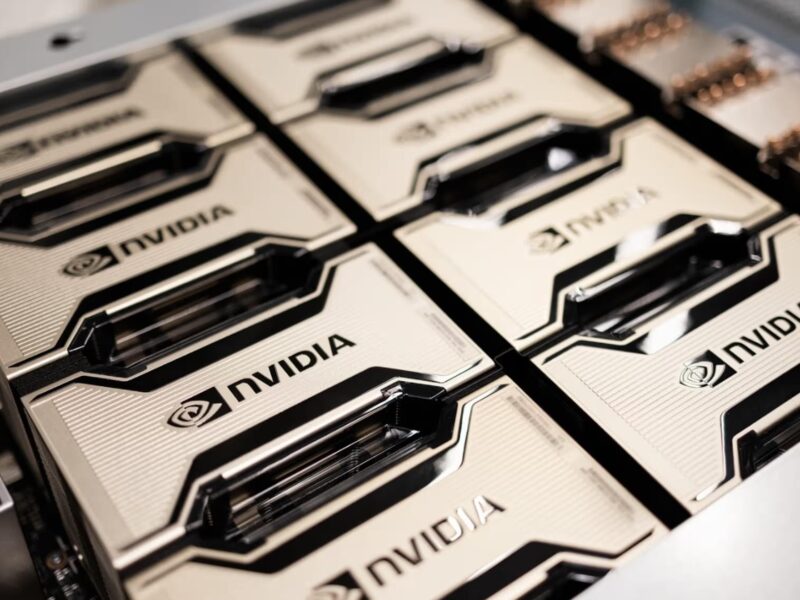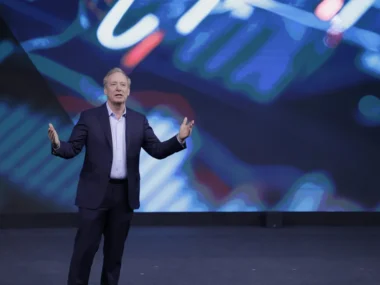Tech businesses are capitalizing on an extraordinary demand for computer power required to operate artificial intelligence.
Since generative AI broke into the global consciousness in 2023, there has been an extraordinary demand for processing capacity, as well as for apps that use the technology.
Tools such as OpenAI’s ChatGPT require hundreds of Nvidia GPUs (graphics processing units) to handle and output all of the data. Last week, Nvidia equated GPUs to rare earth metals for AI, claiming that they are “foundational” for the current operation of generative AI.
According to a survey published last year by French energy giant Schneider Electric, the energy required to power all of this hardware is similar to that of a small country. On Wednesday, OpenAI CEO Sam Altman told an audience at Davos that an energy breakthrough was required to support AI advancements. “There’s no way to get there without a breakthrough,” he stated, implying that increased investment in nuclear fusion is necessary.
Fortune Business Insights predicted earlier this year that the worldwide GPU market was worth $2.39 billion in 2022 and is expected to grow to $3.16 billion in 2023 and $25.53 billion by 2030. Nvidia boasts that more than 40,000 companies utilize its GPUs for AI and faster computing.
To satisfy demand, Nvidia stated in August that it will triple its GPU production. In November, Microsoft announced a multi-year agreement with Oracle to provide computing capacity for its Bing Chat AI capabilities.
Companies that previously supported the bitcoin mining boom are now shifting to capitalize on the current data gold rush.
In July, Canadian business Hive Blockchain changed its name to Hive Digital Technologies and announced a shift to artificial intelligence.
“Hive has been a trailblazer in the bitcoin mining industry since 2017. The adoption of a new name represents a significant strategic shift to capitalize on the potential of GPU Cloud compute technology, a critical tool in the world of AI, machine learning, and advanced data analysis, allowing us to expand our revenue channels with our Nvidia GPU fleet,” the company stated in its announcement at the time.
Frank Holmes, the company’s executive chairman, told Guardian Australia that the change was time-consuming.
“Moving from mining Ethereum to hosting GPU cloud services involves buying powerful new servers for our GPUs, upgrading networking equipment and moving to higher tier data centres,” he told me.
“The sole similarity is that GPUs are the workhorses in both scenarios. GPU cloud computing necessitates more powerful supporting hardware as well as a more secure and speedier data center environment. There is a severe learning curve in the GPU cloud market, but our staff is adjusting and learning quickly.”
Others, such as Iris Energy, a datacenter firm based in Canada and Texas and co-founded by Australian Daniel Roberts, have had this in mind since the beginning. When the AI boom hit, Iris did not require any changes to the company’s operations, Roberts told Guardian Australia.
“Our aim has been to bootstrap the datacentre infrastructure with bitcoin mining and then maintain optionality in the entire digital world. The difference between us and crypto-miners is that we work in data centers.
The company continues to highlight its bitcoin mining capabilities, but in its most recent findings, Iris stated that it was well positioned for “power dense computing” using 100% renewable energy. According to Roberts, bitcoin mining and artificial intelligence are not mutually exclusive.
“I think when you look at bitcoin versus AI, the market will just reach equilibrium based on the market-based demands for each product,” he added.
“So bitcoin’s in demand as a store of value, gold 2.0… it’ll go up, it will command an economic incentive to secure it.”People will be willing to pay for AI as it becomes more widely adopted. And then we have the option of pivoting between the two and optimising on a path-dependent basis.”
Holmes said: Hive also observed the two industries running in tandem.
“We enjoy the bitcoin mining business, although its revenue is somewhat uncertain. “GPU cloud services should complement it nicely,” he stated.
“The revenue should be steadier, but still offer attractive margins and the opportunity for rapid growth.”
Despite predictions of a “crypto winter” in 2023, the value of bitcoin reached a two-year high of US$49,061 on January 11, after the US securities regulator approved the first US-listed exchange traded funds (ETFs) to track bitcoin. It fell back below US$40,000 this week.
As with cryptocurrency mining, the huge computing power required by AI systems results in massive amounts of energy and carbon emissions for some of the facilities.
AI companies like OpenAI keep their carbon emission figures hidden, but it is estimated that training the previous iteration of GPT, GPT-3, consumed 1,287 megawatt hours of electricity and produced 552 tonnes of CO2 – the equivalent of driving 123 fossil-fuel-powered cars for one year.
Iris Energy sees its usage of renewables as both environmentally friendly and financially effective.
“We have gone to the source of low-cost excess renewables where we’ve gotten an abundance of land and an abundance of power,” he remarked. “[At our] Texas facility, we have a 600-megawatt grid connection to an area with 32 gigawatts of wind and solar. And the transmission line is 12 gigawatts to export it down to Dallas and Houston.
While there is tremendous buzz, some are skeptical of the market shift, implying that people are simply jumping from one trend to the next.
Institutional Investor reported in August that Applied Sciences, a “penny stock” company, reinvented itself as a bitcoin miner hosting company in April 2022 as Applied Bitcoin, but by November 2022, perhaps sensing a shift in investment, renamed itself Applied Digital with a focus on AI.











